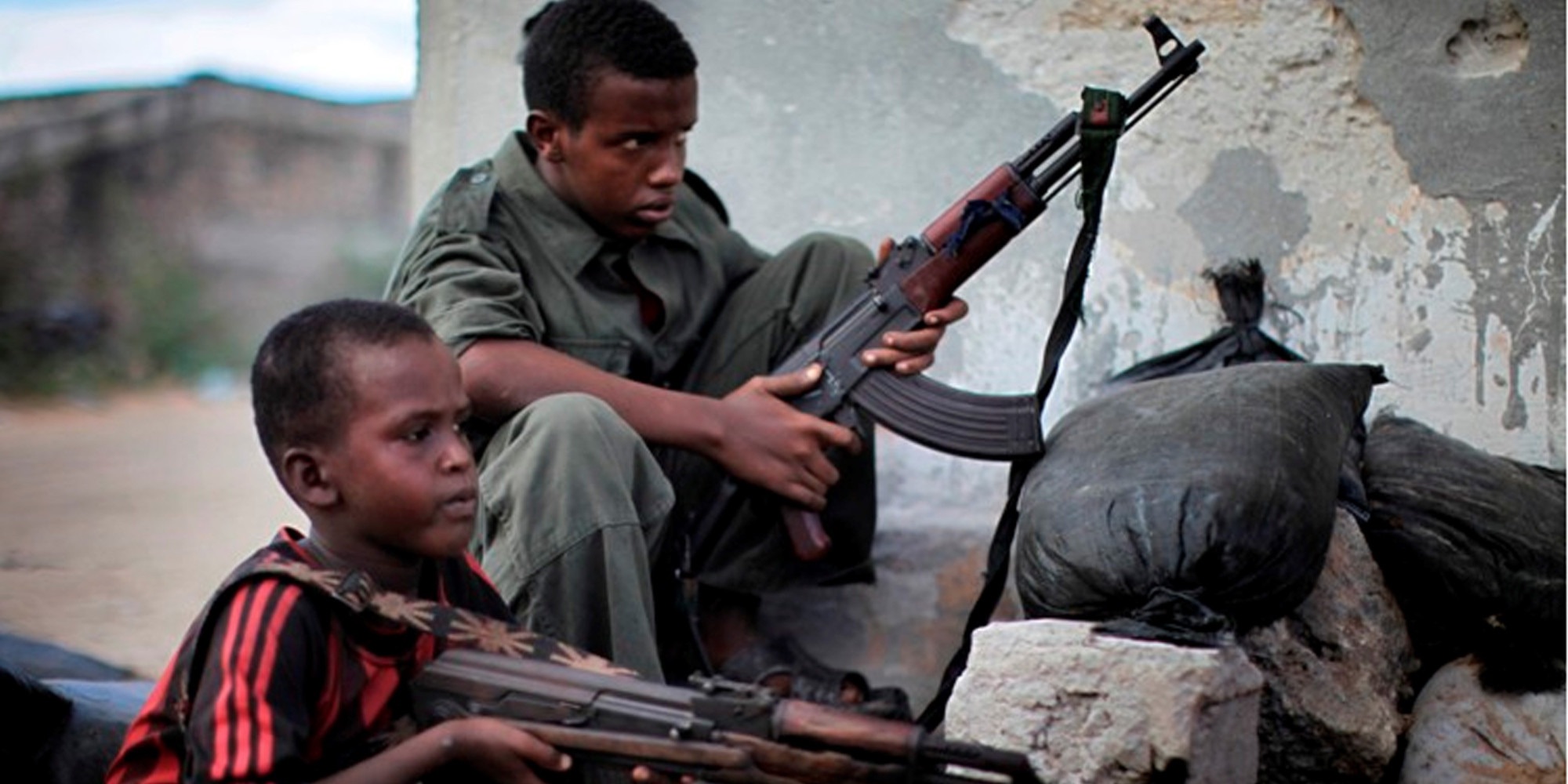By Asha Collins
Think back to when you were little, maybe 9 years old – Where did you spend most of your time? What are your fondest memories? What did you look forward to? Maybe you spent most of your time at school, or at home. Did you enjoy playing sports, and going to choir rehearsal; maybe you loved spending time with your family reading books, and watching movies. For many children in Somalia, this is far from the reality. Their realities are flooded with violence, war, and fear. According to the United Nations, the Somali Government is one of the most persistent violators of sending children into war situations. These are children ranging in ages from 9 to 18, who have been born in a country that has been in turmoil since before their first breath entered their lungs.
Somalia was a former colony of Great Britain, France, and Italy. In 1960 the country gained independence, the British and Italian territories were combined into what is now known as Somalia, the French territory separated and turned into Djibouti. From 1969 to 1991, Somalia became a socialist state, under the leadership of Major General Muhammad Siad Barre. In 1991, rebel forces overthrew the Barre regime and anarchy ensued. Intervention attempts since the early 1990s by the United Nations, the United States of America and the African Union have all been unsuccessful. In the early part of the 2000s, a Transitional Federal Government was established with the political and financial support of the United Nations and the United States. This caused fragmentation between various groups of people and gave rise to notorious rebel groups such as the Somali chapter of al-Qaeda – al-Shabaab. Al-Shabaab is the main rebel group operating in Somalia.
Throughout this seemingly endless conflict, children have been drawn into the fight. Both the rebel forces and the Somali government employ the use of child soldiers, and are known to have killed and maimed children to pursue their interests in the civil war. According to Elman Peace and Human Rights Center in Mogadishu, it is estimated that twenty percent of the government forces and up to 80 percent of the rebel forces are children. This does not mean that all children are on the front lines, other roles that they might fulfil include camp support workers (e.g. cooking, cleaning), messengers, sex slaves, or recruiters. For many children, joining the fight is a better option than trying to resist either side. In a country fraught with conflict, families are broken up, children are orphaned, and the threat of starvation and death are immanent.
It is interesting to note the high percentage of child soldiers on the side of the rebel forces. This could be attributed to the general recruitment techniques of al-Shabaab. Whereas many groups kidnap and drug children to recruit them, al-Shabaab uses a method that makes the children feel empowered to fight, or work in the ranks. When al-Shabaab gains control over a new town, the group set up schools and other services that resemble the goal of sustainable rebuilding, but in fact, they are building training camps. In the schools, children are then indoctrinated with jihadist and anti-governmental ideologies. Al-Shabaab creates a system of reward-based learning so children feel worthy and feel like they belong to a community, an element of safety they may have never experienced before. Al-Shabaab understands the manipulability of children. Because children don’t understand if the battle is being won or lost, they will just follow orders and are therefore easy to use at the frontlines. While the reward-based tactics of recruitment sound peaceful, there is no doubt that al-Shabaab uses violence to recruit children, especially when recruiting girls as brides for commanders. The families of girls who do not willingly become wives are threatened into forcing their daughters to be wed. Furthermore, these training camps follow a violent conquer of villages and towns by al-Shabaab.
What is being done to remove children from conflict situation? International Law on child soldiers is vague and protocols in place are weak. Art. 38 of the United Nations Convention on the Rights of the Child requests governments to take precautions against the recruitment of children under the age of 15 into conflict situations. As for the Somali conflict, the Transitional Federal Government has pledged to end the recruitment of children since 2010. A more concrete action plan was signed by the Transitional Federal Government and the United Nations in 2012. It dictates termination of the practice of recruitment and use of children in the Somali national armed forces; the reintegration into society, with U.N. support, of all children released from the armed forces; the criminalization in national legislation of the recruitment and use of children; and the provision to the U.N. of unimpeded access to military installations to verify the presence or absence of children. Unfortunately, according to the HRW World Report 2015, progress has been slow on these action plans. The lack of action that is being taken to protect these children is detrimental because so many lives are being corrupted or lost. Furthermore, when the conflict comes to an end, the population that will be rebuilding the country will not know a time of peace and security.
Asha Collins, is an International Studies major on exchange from Toronto, Canada.

